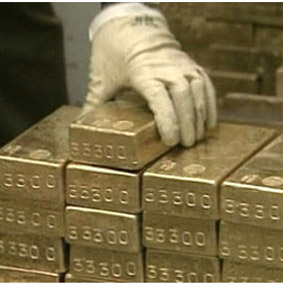Baku, Azerbaijan, Feb. 26
By Maksim Tsurkov – Trend:
Commodities traded flat on the week with the Bloomberg Commodity Index showing gains in energy being offset by losses across both industrial and precious metals, Head of Commodity Strategy / Saxo Bank Ole Hansen told Trend Feb. 26.
Hansen said that the agriculture sector traded flat following a month of strong gains, particularly among key crops.
“The latest weekly report from the US Energy Information Administration delivered a triple dose of bullish news with WTI surging to resistance at $63.15/barrel,” he said. “This followed a surprise counter-seasonal drop in stocks driven by surging exports while production was flat following a recent jump.”
Hansen said that gold, meanwhile, endured its worst week since early December on the back of a stronger USD, a hawkish Federal Open Market Committee, and the US 10-year government bond yield approaching 3% – a level not been seen since it was rejected back in December 2013.
“The fifth consecutive failure (since 2014) in breaking higher has also helped raised short-term concerns about a deeper correction,” Hansen added.
“The motto of this year’s annual Munich Security Conference, held last week, was "To the Brink – and Back",” Hansen said. “All indications unfortunately pointed towards further conflicts as the conference laid bare the major lack of trust among world powers.”
“It highlighted multiple geopolitical risks ranging from US versus Russia, The West versus North Korea, Europe versus Turkey, and a messy Middle East where Russia and Iran are up against Israel and the US in Syria,” he said.
“Other threats being discussed and worried about were cyber threats and not least the rise in global trade tensions, especially between the US and China,” he said. “The US Commerce Department recently released its recommendations for restricting imports of steel and aluminium. The proposal, which now awaits a response and approval from President Trump, could potentially slap punitive tariffs on imports from five major suppliers including China and Russia.”
“From a global perspective the impact is likely to be limited with the biggest being the risk of tit-or-tat retaliation on US imports, not only from China but also from other countries singled out by the proposal,” he said. “The stock prices of US steel and aluminium producers are likely to receive a boost while US manufacturers making products from the two metals could suffer a competitive disadvantage given the impact of higher prices for domestically produced steel and aluminium.”
“Industrial metals in general traded lower as Chinese investors returned from their New Year holiday,” he said. “The weakness was driven by a recovering dollar, increased expectations for further FOMC rate hikes, and China's quest to deleverage in order to achieve a more sustainable growth trajectory.”
Hansen said that while investors await an expected post holiday pick-up in Chinese demand, the downside risk for now seems limited with HG Copper currently trading within a $3 to $3.3/lb range.
“Overall the agriculture sector led by grains seems to have woken up from a multi-year snooze with record high stock levels increasingly being challenged by an uncertain production outlook,” he said. “During the past month, a rising weather premium has emerged after extreme heat in the Southern Hemisphere and extreme cold across the Northern hemisphere impacted a variety of food commodities from soybeans to wheat and cocoa.”
“Additional support has come from the weaker dollar, strong demand, and rising energy prices as well as short covering from hedge funds who have been reducing a record grain short back to neutral during the past four weeks,” he said.
“The recent rally in key crops led by soybeans due to lower output from Argentina may now pause ahead of the crucially important month of March,” he said. “This is when the size of the Latin American harvest will become known while the US planting season begins, and with that news about what and how much US farmers intend to plant.”
“During the past week oil and gas operators as well as traders and ministers descended on London for the biggest annual gathering of oil executives at the IP Week,” Hansen said. “While the consensus was for higher prices due the successful and ongoing production cuts from Opec and friends, some uncertainty with regard to surging non-Opec production was also seen.”
Hansen said that this was highlighted by the International Energy Agency which is forecasting that global demand growth in 2018 and 2019 can be met by rising non-Opec production.






